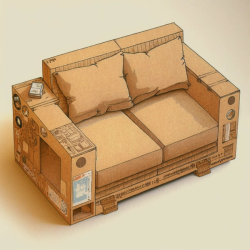Recently, a letter to the editor in the Washington Post (about a cartoon that showed a woman talking about being late for her appointment to have her cat declawed) reminded the Whiskers, Paws and Love team that declawing surgery, which began in 1952, is still a common practice in veterinary medicine.

The letter-writer was horrified that such an insensitive cartoon had been published, and we are equally horrified. The following explains exactly what declawing is, how it affects your cat, and where we currently stand in the battle to eliminate the inhumane practice of declawing.
Declawing is a procedure that involves the use of guillotine clippers to amputate cats’ toes. It can be likened to having the last bone of each of your toes amputated up to the first knuckle. As soon as they wake up from surgery, cats, who walk on their toes (unlike humans who walk on the soles of our feet) must walk on their amputation sites.
Cats suffer the consequences of declawing surgery for the rest of their lives. 50% of cats experience complications immediately after surgery (including excessive bleeding, opening up of the wounds, and infection). One in five cats has long-term complications which lead to one or more of the following: persistent postoperative pain, back pain, limping, permanent nerve damage, infection, arthritis, over-grooming, toe pad calluses, bone fragments, claw regrowth under the skin, and a painful and debilitating condition known as tendon contracture. In addition, fully one-third of declawed cats develop behavioral problems such as litter box aversion, biting behavior, and decreased confidence.
More than 20 countries have banned the practice of declawing. In the U.S. declawing is outlawed in the states of New York, New Jersey, and Maryland; in the District of Columbia, and in the cities of Austin, Denver, St. Louis and St. Louis County, Pittsburgh, and Madison; as well as eight California cities: West Hollywood, Los Angeles, San Francisco, Berkeley, Beverly Hills, Culver City, Santa Monica, and Burbank.




